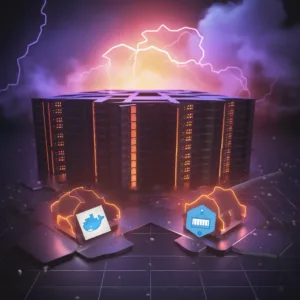Serverless Workers & Containers
Serverless Architecture with Docker and IronWorker
Are you a developer struggling with managing servers, dealing with scaling issues, or simply looking to cut costs? Then this guide is for you. Dive into the world of serverless architecture with the powerful duo of Docker and IronWorker. This article explores their synergy, and providing insights that could revolutionize your development process. 5 key…
Read MoreHow to Create a Docker Container?
App development and deployment now needs to be slicker and simpler than ever. To stay ahead of the competition, you need to be able to get your app up and running quickly without a ton of conflict issues or worrying that problems will arise depending upon which device is running it. That’s where the Docker…
Read MoreAWS Fargate vs. Azure Containers
AWS Fargate and Azure Containers make it easier for developers to focus on building applications instead of managing IT infrastructures. Containers operate as independent runtime environments with their own configurations, libraries, and frameworks. These features make software more dependable because containers do not rely on specific operating systems. Anyone can access and use them regardless…
Read MoreAzure Containers vs Docker: The Differences
In search of an optimal platform for your apps? You’ve probably discovered Azure Container Service and Docker Cloud data centers. While they may seem rival services, they’re indeed synergistic in providing your container-based app. The concept of Azure Containers vs Docker isn’t about competition but complementing each other in app development. Read on to know…
Read MoreHow to Run Cron Jobs Every 5, 10, or 15 Minutes
In the dynamic world of software development, repetitive tasks can consume a significant amount of time and hinder productivity. By mastering the art of setting up cron jobs every 5, 10, or 15 minutes, developers can alleviate this pain point and enable themselves to focus on more valuable work. Dive into this comprehensive guide to…
Read MoreAWS Fargate vs Cloud Foundry
Your container management decision could make or break your application performance! Don’t risk missing out on the perfect solution. Our detailed comparison of AWS Fargate vs Cloud Foundry is designed to help you find a feature-rich, budget-friendly option. It’s more than a choice, it’s your path to application excellence. Don’t wait, dive in now! You…
Read MoreMonitor AWS Lambda Functions Using Container Images
Since its inception, the concept of a serverless ecosystem has fascinated developers. While making deploying applications faster and simpler than ever, serverless environments now offer a strategic means of building scalable, modern products. However, as organizations continue to rapidly adopt the latest in serverless tech, many developers are facing visibility gaps due to holes and…
Read MoreHeroku vs. Docker: What’s the Difference?
Introduction Heroku and Docker are both highly popular container solutions. They deploy software in containers, which are virtual “packages” that bundle applications’ source code together with their dependencies and configurations. This ensures that they always run predictably in different environments. But what’s the difference between Heroku and Docker, and what are the Heroku vs. Docker issues you should know about? Achieve serverless computing with Iron Find out how IronWorker’s mature, feature-rich…
Read MoreAWS Lambda vs. Fargate Containers | IronWorker
Docker container technology is open source, which means it’s possible to deploy your containers on a range of platforms. Both AWS Fargate and Lambda support Docker images, albeit in slightly different ways. So, how do you know which one to use?
Read More

